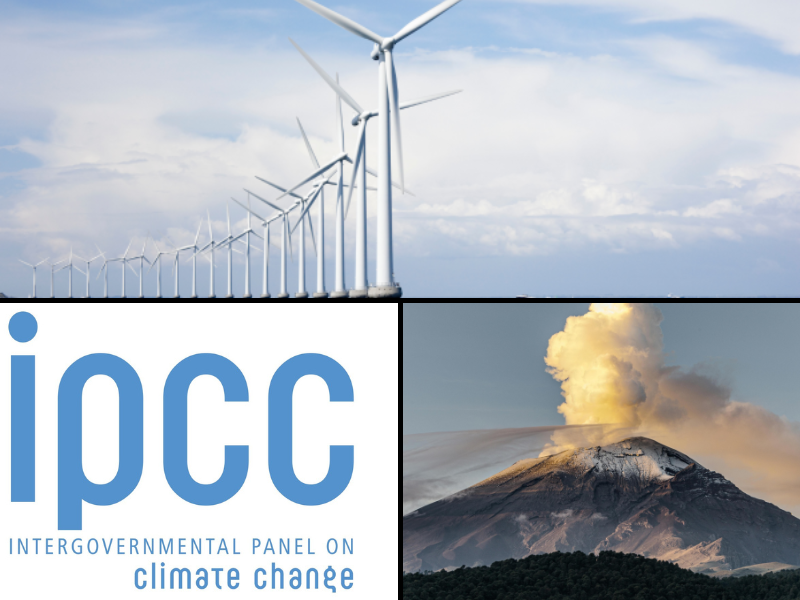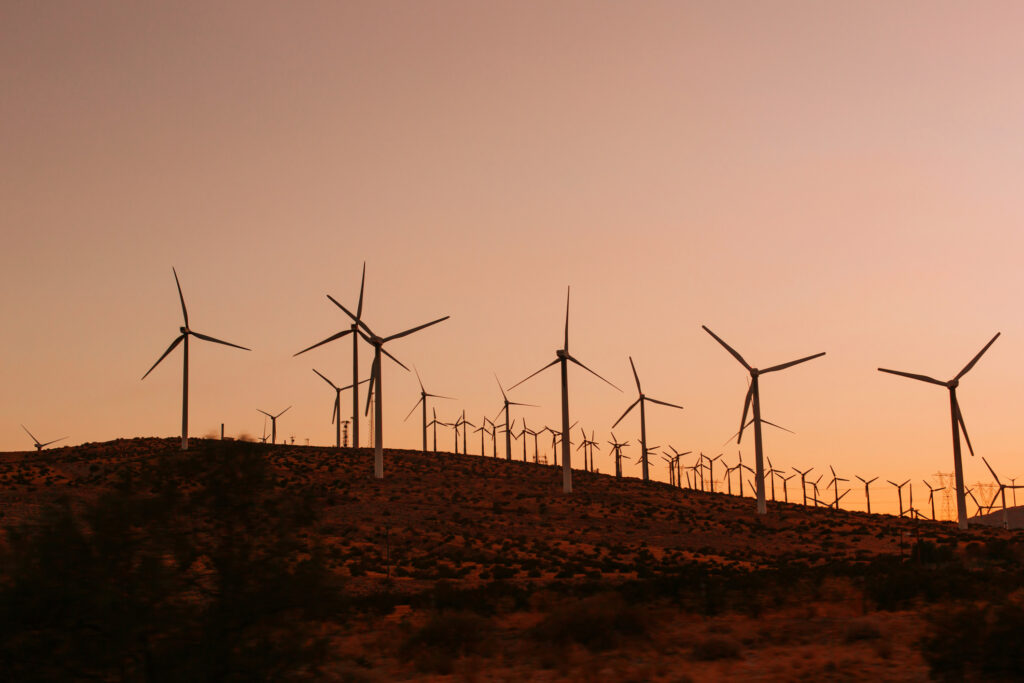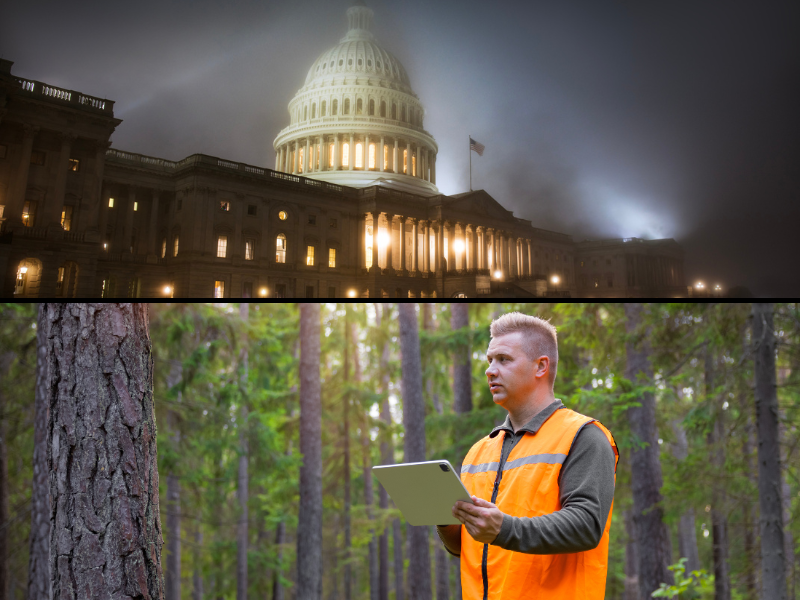A new Heartland Institute Policy Brief warns that the implementation of the “Green New Deal” (GND), introduced by Rep. Alexandria Ocasio-Cortez (D-NY) and championed by other leading members of the Democratic Party, would cause serious environmental and ecological harm. This is primarily due to the massive land use of “renewable” energy sources such as wind and solar power and the amount of rare earth minerals that would need to be mined to manufacture these energy sources.
The Brief, authored by Paul Driessen, a policy advisor to the Committee for a Constructive Tomorrow, notes that the GND has already been “roundly criticized for the astronomical costs it would impose upon factories, businesses, households, hospitals, and virtually every other sector of the U.S. economy, as well as for the economic devastation it would inflict.”
However, Driessen argues, “too little attention has been paid to the fact GND policies would seriously harm the environment—including lands, wildlife habitats, and threatened and endangered species—and thus would undermine the very values environmentalists have espoused for decades.”
The main problem would be the excessive amount of land that would be needed to power the country with wind and solar. Driessen estimates 18.8 billion solar panels would be required, covering 57,048 square miles—the equivalent of blanketing the entire states of New York and Vermont combined. Driessen also notes that “[Negative habitat impacts] on desert tortoises and other rare, threatened, or endangered species [from solar farms] have already prompted legislators, regulators, and courts to block or ban solar facilities in critical habitat areas, such as parts of California’s Mojave Desert, despite the fact that such sunny areas would be ideal locations for solar energy facilities.” What will these legislators, regulators, and courts do when solar power, which currently provides 1.5 percent of the country’s electricity, is dramatically expanded into more habitats?
The footprint needed for wind power is far larger and more destructive. While noting it would be “virtually impossible” to power the entire country using just wind power, Driessen estimates 2.12 million turbines would be required to do so, covering 500,682 square miles of land. This means covering an area the size of Arizona, California, Nevada, Oregon, and most of West Virginia—combined. These turbines are responsible for killing hundreds of thousands, perhaps millions, of birds and bats each year. Estimates of the death toll range from 570,000 to 10 million per year. With wind currently making up only 6.6 percent of the U.S. electricity portfolio, the number of bird and bat deaths would exponentially increase with a hypothetical push to 100 percent wind.
Renewable sources also need to be placed farther away from urban centers than natural gas and coal facilities, requiring the building of thousands of miles of high-transmission power lines, threatening a large increase in wildfires. “The 2018 and 2019 wildfires in California demonstrate that when power sources serve distant urban and industrial areas, transmission lines must frequently traverse wild grass, brush, and forest areas that dry up during long summers and pose serious fire threats,” Driessen notes. “If those power lines are not maintained and upgraded on a regular basis, and if grass, brush, and overgrown, diseased, and dead trees are not thinned or removed, catastrophic wildfires can result. These wildfires destroy homes and businesses, burn and kill people, immolate wildlife, and incinerate soil organic matter and organisms, leaving vast areas sterile, susceptible to erosion and mudslides, and unable to support wildlife for decades.”
Pollution from manufacturing and installing these renewable systems is also significant. Driessen point out the manufacturing of solar panels require the use of “lead, cadmium telluride, copper indium selenide, cadmium gallium (di)selenide, copper indium gallium (di)selenide, hexafluoroethane, and polyvinyl fluoride. All pose environmental dangers and health hazards.” Further, a massive expansion of wind turbines would require a “gargantuan” amount of concrete and steel far beyond what U.S. manufacturers produce for all products.
“With all these factors in mind, it’s clear the Green New Deal would not only be an economic catastrophe,” Driessen concludes, “it would also be an environmental disaster—one that all policymakers should firmly reject.”
The following documents provide more information on the Green New Deal and renewable energy.
Policy Brief: Protecting the Environment from the Green New Deal
https://heartland.org/wp-content/uploads/documents/EnviHarmsPB.pdf
This Heartland Policy Brief by Paul Driessen, policy advisor to the Committee for a Constructive Tomorrow, reviews the largely ignored environmental damage that would result from the expanded use of renewable energy mandated under the Green New Deal.
Policy Brief: The Green New Deal: A Grave Threat to the American Economy, Environment, and Freedom
https://heartland.org/wp-content/uploads/documents/GreenNewDealPB.pdf
The Heartland Policy Brief argues the Green New Deal is a dangerous combination of environmental extremism and socialism. The tremendously expensive proposal would devastate the U.S. economy and cause more environmental destruction than protection. The provisions of the Green New Deal pose a dangerous threat to the American values of individual freedom and limited government.
The U.S. Leads the World in Clean Air: The Case for Environmental Optimism
https://files.texaspolicy.com/uploads/2018/11/27165514/2018-11-RR-US-Leads-the-World-in-Clean-Air-ACEE-White.pdf
This paper from the Texas Public Policy Foundation examines how the United States achieved robust economic growth while dramatically reducing emissions of air pollutants. The paper states that these achievements should be celebrated as a public policy success story, but instead the prevailing narrative among political and environmental leaders is one of environmental decline that can only be reversed with a more stringent regulatory approach. Instead, the paper urges for the data to be considered and applied to the narrative.
The 100 Percent Renewable Energy Myth
https://www.instituteforenergyresearch.org/wp-content/uploads/2019/02/Renewable-Myth-Policy-Brief219.pdf
This Policy Brief from the Institute for Energy Research argues that a countrywide 100 percent renewable plan would put the U.S. economy in jeopardy. The brief investigates the intermittency, land requirements, capacity factors, and cost of transition and construction materials that limit the ability of the U.S. to adapt to 100 percent renewable energy.
Do Renewable Portfolio Standards Deliver?
https://bfi.uchicago.edu/working-paper/do-renewable-portfolio-standards-deliver/
This working paper from the Energy Policy Institute at the University of Chicago finds that average retail electricity prices in states after the passage of a renewable energy mandate are 11 percent higher after seven years and 17 percent higher after a dozen years, even though the increase in renewable electricity generation is a minimal 1-4 percent.
Evaluating the Costs and Benefits of Renewable Portfolio Standards
https://heartland.org/publications-resources/publications/evaluating-the-costs-and-benefits-of-renewable-portfolio-standards?source=policybot
This paper by Timothy J. Considine, a distinguished professor of energy economics at the School of Energy Resources and the Department of Economics and Finance at the University of Wyoming, examines the renewable portfolio standards (RPS) of 12 different states and concludes while RPS investments stimulate economic activity, the negative economic impacts associated with higher electricity prices offset the claimed economic advantages of these RPS investments.
Legislating Energy Poverty: A Case Study of How California’s and New York’s Climate Change Policies Are Increasing Energy Costs and Hurting the Economy
https://www.pacificresearch.org/wp-content/uploads/2018/12/LegislatingEnergy_F_Web.pdf
This analysis from Wayne Winegarden of the Pacific Research Institute shows the big government approach to fighting climate change taken by California and New York hits working class and minority communities the hardest. The paper reviews the impact of global warming policies adopted in California and New York, such as unrealistic renewable energy goals, strict low carbon fuel standards, and costly subsidies for buying higher-priced electric cars and installing solar panels. The report finds that, collectively, these expensive and burdensome policies are dramatically increasing the energy burdens of their respective state residents.
The Social Benefits of Fossil Fuels
https://heartland.org/publications-resources/publications/the-social-benefits-of-fossil-fuels
This Heartland Policy Brief by Joseph Bast and Peter Ferrara documents the many benefits from the historic and still ongoing use of fossil fuels. Fossil fuels are lifting billions of people out of poverty, reducing all the negative effects of poverty on human health, and vastly improving human well-being and safety by powering labor-saving and life-protecting technologies, such as air conditioning, modern medicine, and cars and trucks. They are dramatically increasing the quantity of food humans produce and improving the reliability of the food supply, directly benefiting human health. Further, fossil fuel emissions are possibly contributing to a “Greening of the Earth,” benefiting all the plants and wildlife on the planet.
Climate Change Reconsidered II: Fossil Fuels – Summary for Policymakers
https://heartland.org/publications-resources/publications/climate-change-reconsidered-ii-fossil-fuels—summary-for-policymakers
In this fifth volume of the Climate Change Reconsidered series, 117 scientists, economists, and other experts assess the costs and benefits of the use of fossil fuels by reviewing scientific and economic literature on organic chemistry, climate science, public health, economic history, human security, and theoretical studies based on integrated assessment models and cost-benefit analysis.
Nothing in this Research & Commentary is intended to influence the passage of legislation, and it does not necessarily represent the views of The Heartland Institute. For further information on this subject, visit Environment & Climate News, The Heartland Institute’s website, and PolicyBot, Heartland’s free online research database.
The Heartland Institute can send an expert to your state to testify or brief your caucus; host an event in your state; or send you further information on a topic. Please don’t hesitate to contact us if we can be of assistance! If you have any questions or comments, contact Heartland’s Government Relations department, at [email protected] or 312/377-4000.




